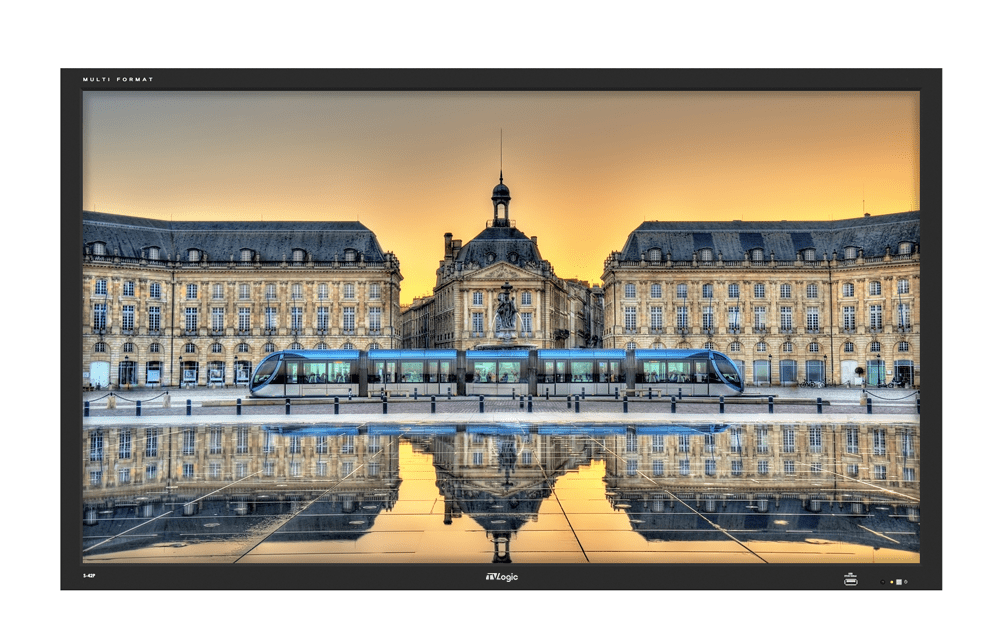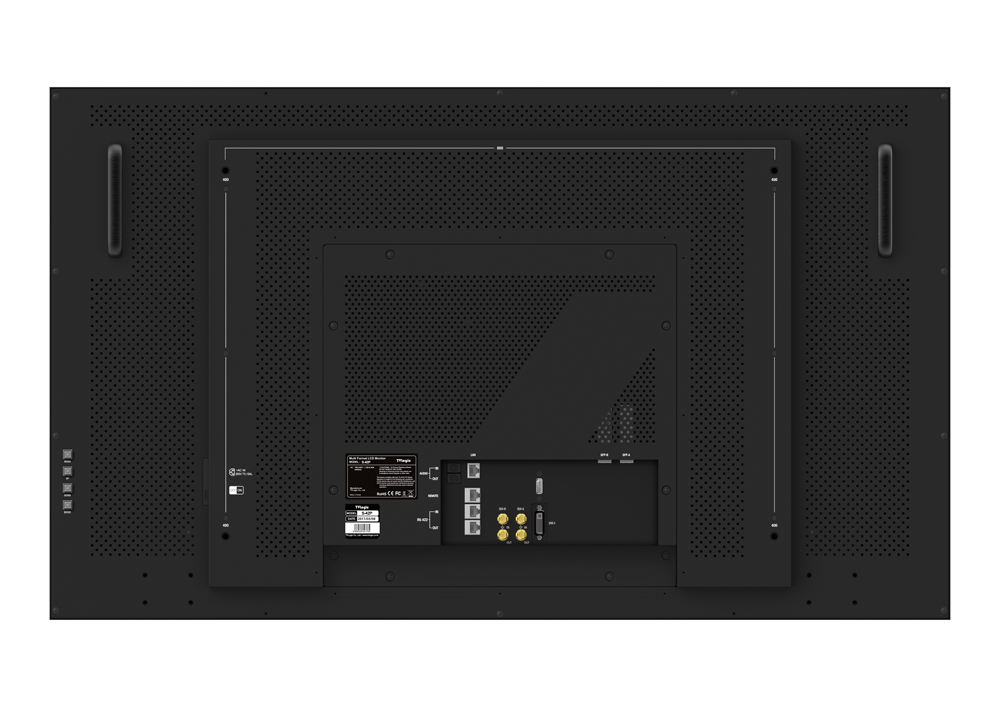S-42P : 42’’ FHD Studio Monitor with SFP module & Ember Protocol
The S-42P is Full HD Studio Wall monitor with high contrast ratio and wide viewing angle. It supports various video formats including 3G/HD-SDI, HDMI and DVI. The SFP interface can be supported for versatility. The S-series provides network control by Ember+ protocol and HDR emulation function with HDR EOTFs of PQ, HLG and SLog3.


















42’’ FHD Studio Wall Monitor with SFP module & Ember Protocol
The S-42P is Full HD Studio Wall monitor with high contrast ratio and wide viewing angle.
It supports various video formats including 3G/HD-SDI, HDMI and DVI. The SFP interface can be supported for versatility.
The S-series provides network control by Ember+ protocol and HDR emulation function with HDR EOTFs of PQ, HLG and SLog3.
Main Body Dimensions
Main Body 985 x 583 x 76(mm) / 38.78 x 22.95 x 2.99(inch)
With Stand 985 x 631.5 x 245(mm) / 38.78 x 24.86 x 9.65(inch)
Weight 24kg / 52.91lbs
Product Highlights
• 42” Full HD Resolution (1920×1080)
• 1.07 Billion Colors (10bit)
• HDR (PQ, HLG, SLog3)
• Ember+ Protocol (LAWO)
• TSL 3.1/5.0 Support
• Selectable Output via Internal Routing
• 2 x SFP Input/Output
• PBP(Picture By Picture)
• Fast Mode
• Custom 3D LUT Import by USB Flash Drive
• Various Built-in Camera LUTs
• Closed Caption (CC-608/708, CC-KOR, OP47)
• Waveform
• Vectorscope (High Resolution)
• 16ch Audio Level Meter
• Dual Markers (Main & Sub)
• Timecode Display
• Dynamic UMD
• User Aspect
• Luma(Y’) Zone Check
Optional Accessories
HDR Emulation
A true HDR monitor must employ a special display panel with high dynamic range and a wide color gamut, along with being calibrated for PQ and HLG. For example, the LUM-310X (dual layer LCD system) and LUM-310R (LCD with local dimming backlight system) are capable of reproducing a peak luminance of 1,000 nit and 2,000 nit respectively, and a contrast ratio of 1,000,000 : 1; in addition, they cover 99% of the DCI color gamut.


Other monitor utilizing displays with normal luminace range from 0.1nit up to 400nit or high luminance monitor with up to 2000nit with variable black level (0.1 ~ 1.5nit) is defined as 'HDR Emulation monitor' in TVLogic although they have HDR EOTF and related functions. Below is a simple example for your reference.
* True HDR Monitor : HDR Display (~1000nit, 1M CR, DCI gamut) + HDR EOTF & other related function
* HDR Emulation Monitor : Normal Display (~400nit, 1000:1, BT.709 gamut) + HDR EOTF & other related function
And in TVLogic monitors, HDR Emulation function includes the control parameters below;
* Standard Color Mode (HLG, PQ, PQ2)
* Video Range
* Display Luminance *
* HDR EOTF (PQ, HLG) or Camera Logs** (coming soon)
* PQ EETF (On / Off)
* HLG System Gamma (Fixed 1.2 / Auto)
* Color Gamut (BT.709, DCI-P3, BT.2020 and Native mode)
* White Point (D65, D93, DCI)
* Gamut Warning
* Shadow Mode *** (LUM-318G only)
* True HDR Monitor : HDR Display (~1000nit, 1M CR, DCI gamut) + HDR EOTF & other related function
* HDR Emulation Monitor : Normal Display (~400nit, 1000:1, BT.709 gamut) + HDR EOTF & other related function
And in TVLogic monitors, HDR Emulation function includes the control parameters below;
* Standard Color Mode (HLG, PQ, PQ2)
* Video Range
* Display Luminance *
* HDR EOTF (PQ, HLG) or Camera Logs** (coming soon)
* PQ EETF (On / Off)
* HLG System Gamma (Fixed 1.2 / Auto)
* Color Gamut (BT.709, DCI-P3, BT.2020 and Native mode)
* White Point (D65, D93, DCI)
* Gamut Warning
* Shadow Mode *** (LUM-318G only)
1:1 Pixel Mapping Modes for SD/HD
Displays the original image resolution without scaling to match a certain resolution or an aspect ratio.
Audio Level Meter Display
Displays the level of the embedded sound signal together with the video signal input through the terminal such as SDI or HDMI.

Custom 3D LUT Import
Allows you to load your making 3D-LUT files at NLE software like Davinci Resolve by USB flash memory and displays your LUT on VFM-055A or F-7H. Once you synchronize LUTs in the monitor, you will easily change them on production.

PBP(Picture by Picture)
Support displaying multiple inputs on the screen at the same time.



Time Code Display
Displays the Timecode information on the screen.

User Aspect
Adjusts the Width /Height display ratio.












.jpg)